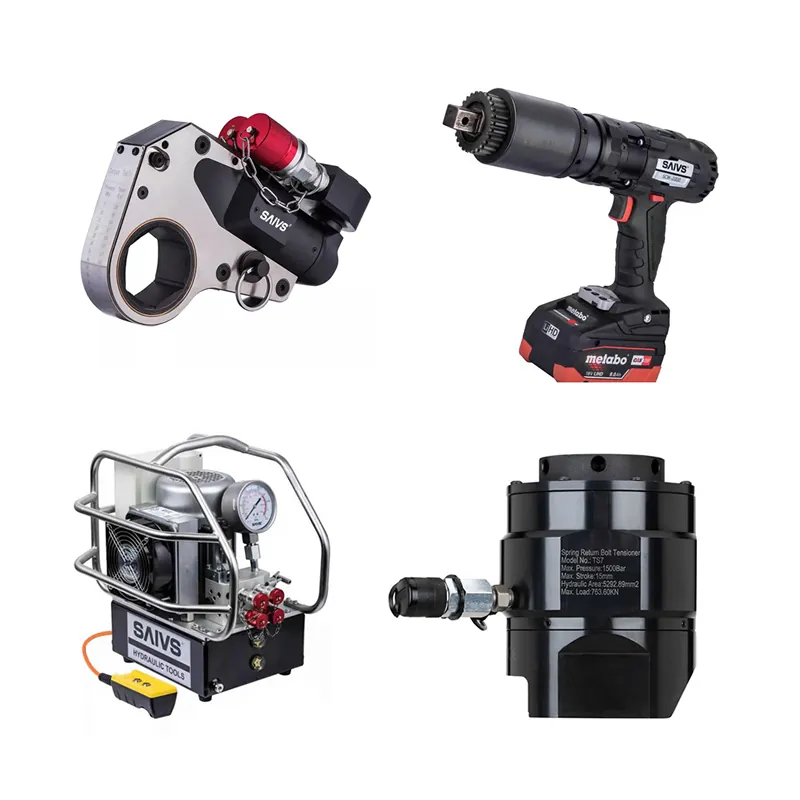How Bolt Torquing Performed Using Tool
Introduction
Bolt torquing is a critical process in various industries, ensuring the integrity and reliability of fastened joints.
The use of appropriate tools and techniques is essential for achieving accurate and consistent torque values.
This article provides a comprehensive guide on how bolt torquing is performed using tools,
covering key aspects such as bolt torque, required equipment, tightening techniques, factors
influencing tightening results, and the importance of calibration and maintenance.
I. Understanding Bolt Torque
Bolt torque refers to the rotational force applied to a bolt or nut to achieve proper clamping force between two or more components.
It is crucial for maintaining joint integrity and preventing loosening or failure under operating conditions.
The torque value required depends on factors such as material properties, environmental conditions, and load considerations.
II. Equipment and Tools Required to Tighten Bolts
To perform effective bolt torquing, several tools are necessary:
1. torque wrenches: Torque Wrenches are precision tools designed to apply a specific amount of torque to a bolt or nut.
They come in various types, including click-type, beam-type, dial-type, and Digital Torque Wrenches.
Torque wrenches allow controlled application of torque with adjustable settings
suitable for different bolt sizes and torque requirements.
2. hydraulic tensioners: Hydraulic tensioners are specialized devices used for achieving accurate bolt tensioning.
They utilize hydraulic pressure to generate tension in bolts uniformly across a joint.
Hydraulic tensioners are particularly useful for large or heavy-duty applications where high levels of clamping force are required.
3. Electronic Torque Measurement Devices: These advanced instruments provide real-time digital readings of applied
torque during the tightening process. They offer greater precision and accuracy compared to
traditional torque wrenches by eliminating human error in reading measurements.
4. Impact Wrenches: Impact wrenches use rotational force combined with repeated impacts to quickly tighten or loosen bolts.
They are commonly used in applications where speed is crucial, such as automotive assembly lines or construction projects.
5. Socket Sets: A comprehensive set of sockets is necessary for attaching the appropriate socket size to the fastener
being tightened or loosened. Socket sets typically include a variety of socket sizes, extensions, adapters, and ratchets.
III. How to Use Tools to Tighten Bolts
Proper technique is crucial when using tools for bolt torquing:
1. Preparatory Steps: Ensure safety precautions are followed by wearing appropriate protective gear and inspecting fastening components.
2. Torque Wrench Technique: Set the desired torque value on the wrench based on specifications provided by manufacturers or engineering standards.
3. Hydraulic Tensioner Method: Apply hydraulic pressure gradually while monitoring tension levels until the desired torque value is achieved.
4. Electronic Torque Measurement Technique: Utilize digital devices to measure real-time torque values during tightening processes accurately.
IV. Factors Affecting Precise Tightening Results of Bolts
Several factors can influence the accuracy of bolt torquing results:
1. Friction Factors: Consider lubrication requirements based on material compatibility
and surface finish conditions to reduce frictional losses during tightening.
2.Surface Finish: Smooth surfaces promote better load distribution between mating components,
ensuring consistent clamping forces across the joint.
3.Temperature Effects: Thermal expansion or contraction can affect bolt elongation rates;
thus accounting for temperature variations during torquing operations is crucial.
V.The Importance of Calibration and Maintenance
Regular calibration procedures are vital for maintaining tool accuracy:
1.Calibration Procedures: Periodic calibration ensures that torque wrenches, hydraulic tensioners,
or electronic measurement devices remain within specified tolerances.
2.Maintenance Practices: Regular inspections help identify wear-and-tear issues in tools
that may affect their performance; timely maintenance ensures optimal functionality.
Conclusion
Accurate bolt torquing using appropriate tools plays a significant role in ensuring safe operations
across various industries where reliable joints are critical.The understanding of bolt torque principles
coupled with proper equipment selection,tightening techniques,factors affecting results,and regular
calibration/maintenance practices will enable professionals to achieve precise,bolted connections that
meet stringent quality standards.It's important never underestimate the significance proper bolting
procedures hold towards overall safety,reliability,and longevity within industrial applications.
SAIVS Can Help
With decades of experience, SAIVS can help you with bolt tools, we have an experienced team, please feel free to contact us!
Why Choose SAIVS™ as Your Supplier?
With 20 years of industry experience, SAIVS is a leading Chinese manufacturer of high-quality tools, offering competitive pricing and excellent customer service.We pride ourselves on exceptional quality control, extensive experience, and comprehensive after-sales service.
